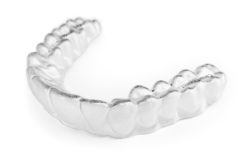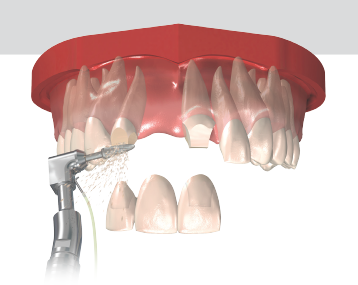Tooth Replacement
Are you missing a tooth? Wondering what your tooth replacement options are? Curious about cost? At Honest Dental, we are here to help! As one of Denver’s top dentists, Dr. Cox has many great options to get you the new tooth you need at a price you can afford.
There are several options to replace a missing tooth, each of which has advantages and disadvantages:
Dental Implants

Dental Implants are the most physiologically similar option to replace a tooth, and the most conservative of your other teeth. Much like your regular teeth, it has a “root” (implant body) that is firmly in your bone on top of which a “tooth” (crown) sits.
Advantages
| No alterations of other teeth needed |
| If down the road there are any issues with the crown, just the crown can be replaced independently of anything else (roughly 1/3rd the cost of if you replaced a dental bridge) |
| Can be used like a regular tooth |
Disadvantges
| About half of insurance plans we encounter have no implant coverage. Some of these plans have coverage for other tooth replacement treatments which can make other options more affordable. |
| Generally, dental implants cost more to place initially. Because they have a better longevity and preserve the bone in the area though, in the long run they cost less than most options. You can read more about implants here. |
Orthodontics

Often, in patients who still have most of their teeth, orthodontics (braces) can be used to move nearby teeth into this space to fill in the gap left by the missing tooth. Often this can be done using invisible braces. While filling this space other orthodontic concerns can also be addressed. In some cases where a large space needs to be filled (think molars), small brackets on only the back teeth to be moved are used in conjunction with the with clear braces, so that you can still smile with confidence while Dr. Cox gets the movements she wants to replace that tooth.
Advantages
| It’s your own tooth you’re replacing it with! This is the best possible scenario, and as long as you care for it like you do all your teeth then it can easily last the rest of your life! |
| While we’re moving these teeth, we can straighten your whole smile and address any other concerns (overbite, crossbite) with the same timeline and no additional charge. |
| Often the orthodontic insurance benefit is independent of your annual maximum! This means that they’ll help out with the cost of orthodontics without using up your annual benefit for cleanings, fillings, etc. |
Disadvantges
| About half of insurance plans we encounter have no implant Timelines take longer. Orthodontics to accomplish this type of movement can take as little as about a year, and take as long as two years. |
| This can’t be done all the time. If your missing multiple teeth in one area, usually there aren’t enough teeth to work with to give you back a natural smile. Also depending on the tooth that’s missing, some teeth won’t look right moved into the place of other teeth. You can read more about Invisible braces here. |
Dental Bridges

One of the very first options created for replacing missing teeth are Dental Bridges. As the name suggests, a bridge ties the two teeth, using them to “float” a tooth (or teeth) in the middle. In order to make a bridge, the teeth next door need to be shaved down on all sides just like a crown. Then, we make a “cinderella slipper” fit bridge that completely covers the tops of the two adjacent teeth and floats a tooth in the middle.
Advantages
| Improve the aesthetic appearance of all 3 teeth in the bridge, not just the one tooth being replaced. |
Disadvantges
| This ties the “fate” of all 3 teeth together. If one of the teeth supporting the bridge goes bad, the other teeth usually does as well. |
| If the bridge breaks, the cost to fix it is an entire new bridge. You can read more about Bridges here. |
Dentures and Partial Dentures

Partial dentures are removable appliances that replace some of your teeth. Using a model of your mouth, these are molded to clasp onto your existing teeth. They conform perfectly to your gum tissue so that they are well supported and you can use them for chewing, but can still be taken out for cleaning.
A full denture is the same as a partial, but it depends entirely on making a suction seal with your gums since it has no teeth to clasp to. Implants can be used in conjunction with a full denture to allow the denture to snap in, giving it added support. This is called an Implant Supported Denture.
Advantages
| Easy to clean and maintain (repairs are much easier when you don’t have to do them inside the mouth!) |
| Usually cheapest option |
Disadvantges
| Since it is designed to come out, you have to learn to use it (just like a tool). Things like taffy or gum can be difficult to chew, especially with full dentures. |
| Over time, your gums and the underlying bone will naturally change. This results in the fit of the denture eventually being off, requiring what’s called a “reline” to make this fit well again. |
| It can be more obvious that these are not your natural teeth compared to implants or bridges, since the gum-colored framework that rests on your gums is often slightly visible. |
Dr. Cox offers all denture and partial denture services, including fabrication, relines, and repairs. Best of all, we will clean your denture using our ultrasonic cleaner at every cleaning for no charge.
